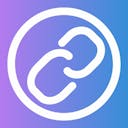Table of Contents
- Understanding Web Content Extraction
- Basic Extraction Methods
- Handling Different Website Types
- Authentication and Session Management
- Content Cleaning Techniques
- Working with International Content
- Scaling Up: Bulk Extraction Strategies
- Best Practices and Common Pitfalls
Understanding Web Content Extraction
Getting clean, usable text from websites isn’t as straightforward as it might seem. Whether you’re a content manager aggregating articles or a researcher gathering data, you need reliable methods to extract the content you need while filtering out the noise.
Think of web extraction like mining for gold – you’re sifting through layers of HTML, JavaScript, and CSS to find the valuable content underneath. The challenge lies in doing this efficiently and accurately across different website structures.
Basic Extraction Methods
The simplest approach to web extraction often starts with using HTTP requests and HTML parsing. Here’s what you need to know:
- Direct HTTP Requests: Using libraries like requests or curl to fetch web pages
- HTML Parsing: Implementing BeautifulSoup or similar parsers to navigate the DOM
- XPath and CSS Selectors: Learning to target specific content elements
Pro tip: Always check a website’s robots.txt file before starting any extraction project. It’s not just good etiquette – it can save you from getting your IP blocked.
Handling Different Website Types
Not all websites are created equal. Here’s how to handle different scenarios:
- Static Websites: Straightforward extraction using basic HTTP requests
- Dynamic Websites: Requiring JavaScript rendering through tools like Selenium or Playwright
- Single Page Applications (SPAs): Waiting for content to load and handling state changes
- Legacy Sites: Dealing with older markup patterns and encoding issues
Authentication and Session Management
Many valuable content sources require authentication. Here’s your game plan:
- Cookie Management: Storing and reusing session cookies
- Form Authentication: Handling login forms programmatically
- OAuth and API Keys: Working with modern authentication methods
- Session Maintenance: Keeping sessions alive during long extraction runs
Content Cleaning Techniques
Raw extracted content often needs significant cleanup. Focus on:
- Removing boilerplate content (headers, footers, navigation)
- Stripping unwanted HTML tags while preserving structure
- Handling special characters and formatting
- Normalizing whitespace and line breaks
One often-overlooked aspect is preserving semantic meaning during cleanup. For example, don’t just strip all HTML – keep elements that indicate emphasis or structure.
Working with International Content
Global content brings its own challenges:
- Character Encoding: Properly handling UTF-8 and other encodings
- Right-to-Left Text: Managing bidirectional content
- Language Detection: Identifying and processing multiple languages
- Local Date Formats: Standardizing date and time information
Scaling Up: Bulk Extraction Strategies
When you need to process hundreds or thousands of URLs:
- Parallel Processing: Using worker pools to speed up extraction
- Rate Limiting: Respecting server limits and avoiding blocks
- Error Handling: Gracefully managing failed extractions
- Data Storage: Efficiently storing and indexing extracted content
Remember: faster isn’t always better. Sometimes a slower, more reliable approach saves time in the long run by avoiding blocks and errors.
Best Practices and Common Pitfalls
Learn from others’ mistakes:
✅ Do:
- Cache results when possible
- Implement proper error handling
- Use appropriate delays between requests
- Keep extraction code modular and maintainable
❌ Don’t:
- Ignore robots.txt guidelines
- Scrape without checking terms of service
- Overload servers with too many requests
- Store sensitive data without proper security
The key to successful web extraction is finding the right balance between speed, reliability, and respect for the source websites. Start small, test thoroughly, and scale up gradually.
Remember, web extraction is both an art and a science. The techniques you choose should depend on your specific needs, the websites you’re targeting, and the scale of your operation.

